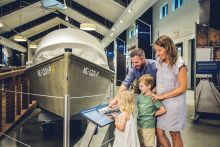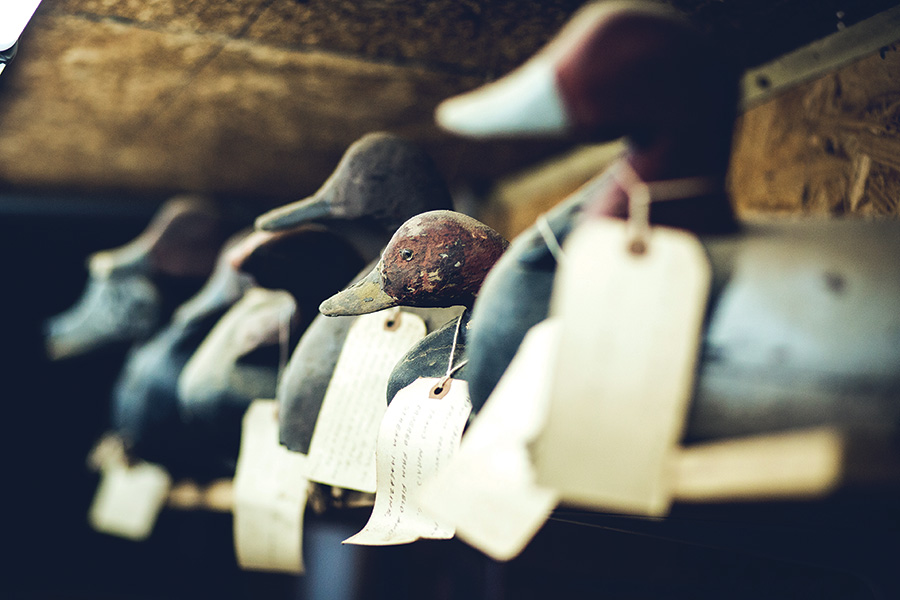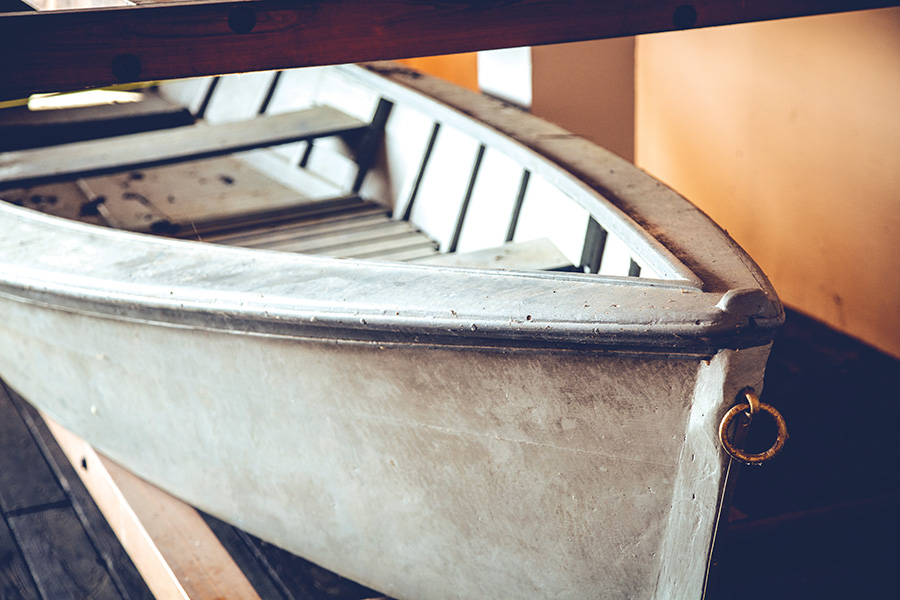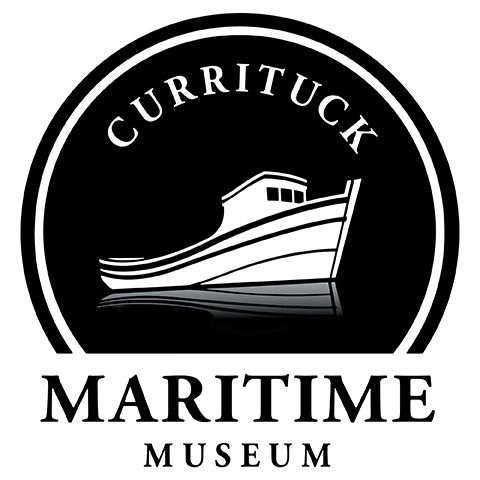
It’s hard to imagine it now, but once upon a time the beaches of Currituck County were desolate and sparsely populated, the remote hinterlands where few ventured. Back then, life in Currituck County was focused primarily on the mainland, centered along the waters of the Currituck Sound and North River. Currituck residents farmed, fished, hunted and guided visiting hunters for a living, and local boat builders constructed wooden boats for residents to use for work, travel, recreation and gathering fish and ducks for food.
Much has changed in Currituck County since then. Development of the Currituck Outer Banks starting in the mid-1980s shifted attention to the oceanfront, and tourism became the economic engine of the county. Newcomers started to outnumber the natives, even on the mainland. Jobs and priorities changed, highways were paved and widened and many of the old wooden boats were cast aside in favor of fancier fiberglass models.
Seeing the old ways of life fading fast, two Currituck natives sought to preserve some of the maritime traditions. In the 1990s Travis Morris and Wilson Snowden began collecting Currituck’s vintage workboats. Over the years they collected about 25 old wooden boats, storing them in horse stables, in sheds and in their yards when they ran out of indoor places to put them.
They recorded each boat’s story and, with the help of Snowden’s wife, Barbara Snowden, documented Currituck-built vessels in the Library of Congress and on the North Carolina Historic Vessel Registry. In 2008 they were given the Award of Merit from the American Association for State and Local History for their efforts to preserve the workboats of Currituck Sound. They made plans that one day they’d see the boats restored and protected in a public indoor museum, and they donated seed money to Currituck County toward that effort. In the meantime, Morris, the author of numerous books about the hunting and fishing heritage in Currituck County, published a book, Hand-Crafted Boats of Old Currituck: Fishing & Boating on the Carolina Coast, in 2014.

The musuem dream finally came true in July 2021 when Currituck County opened the Currituck Maritime Museum in Historic Corolla Park. Alongside Currituck Beach Lighthouse, Whalehead historic house museum and Outer Banks Center for Wildlife Education, the museum adds to the rich story of Currituck’s past, and the many people who worked to bring the museum to fruition hope it will help people appreciate the county as more than just a tourist destination.
“This place has tremendous history,” says Rodney Kight, who served as chairman of the county’s Historic Boat Committee. “If we don’t preserve our history, Currituck County will be just like any other place.”
Snowden attended the opening of the museum, but, unfortunately, Morris passed away before it was fully planned. But his dream lives on through his grandson, Chandler Sawyer, who is the director of the museum and played an integral role in creating the exhibits about the land his family has been occupying since the early 1700s.
“I’m carrying out his dreams,” Sawyer says, “but they’re my dreams too because he put the same ones in me.”
Born, raised and still living on the Currituck mainland, Sawyer grew up on the water and has been around boats all his life. Prior to working for the Maritime Museum, he was a hunt club caretaker and hunting guide. He commutes to his job at the museum by boat, traveling twice a day across Currituck Sound to and from the museum that celebrates his familial heritage.

“It’s telling the story of us as a people,” he says. “This place has changed a lot, and this museum not only tells the story of the old days, but it also shows the continuing traditions.”
The museum houses 11 of the locally built boats collected by Snowden and Morris. The restored boats are a good representation of the types of boats used on Currituck Sound: a flat-bottomed sailing skiff, hunting skiffs, a runabout for recreation, gunning skiffs, commercial fishing boats, a shad boat and more, including former Game Warden Howard Forbes Jr.’s 17-foot Blanton Saunders-built boat, which he used in his job for so long that the state gave it to him when he retired.
The 10,000-square-foot, self-interpretive museum shows Currituck’s dependence on the water, both on the mainland and the Outer Banks, by offering exhibits on all the ways of maritime life such as navigating the sound, weather, boat building, commercial fishing, hunting, decoy carving, lifesaving, lightkeeping, bootlegging and patrolling the waters. Hundreds of photographs, more than 25 videos, displays of old tools and gears, recipes and more bring the ways of life on the water alive.

There are also hands-on, interactive elements. At the entrance to the museum is a map table where you can digitally scroll to see the locations of the past and present hunt clubs, shipwrecks, wharves, life-saving stations and historic inlets in Currituck County. A game to test your boat knowledge incorporates driving the wheel of a boat; though Sawyer says this exhibit may be altered into an experience of driving a boat across Currituck Sound. A knot-tying station gives instructions on how to tie useful knots like the bowline and cleat hitch.
Sawyer says that most visitors are surprised at what the museum reveals about Currituck County’s past.
“People say they didn’t realize the industries that kept us going,” he says. “They don’t realize what was here before all of this that we see today.”
The lifelong residents, most of whom come over to Corolla from the mainland to see the museum, say it rings completely true.
“The local folks just absolutely love it,” Sawyer says. “It’s rewarding for me to educate the visitors, but it’s super rewarding for me to see local folks and natives just light up when they see their history preserved.”
Visiting the Museum
Currituck Maritime Museum is free to visit. Touring the museum and fully absorbing its contents takes at least an hour to do it justice, but of course you could come in and hit the highlights in a shorter amount of time. You’ll find it in Historic Corolla Park between Currituck Beach Lighthouse and Outer Banks Center for Wildlife Education. It’s open Monday through Friday seasonally, closing for six weeks in January and early February.
Historic Corolla Park | 1140 Village Lane, Corolla
CurrituckMaritimeMuseum.com



 Molly Harrison is managing editor at OneBoat, publisher of OuterBanksThisWeek.com. She moved to Nags Head in 1994 and since then has made her living writing articles and creating publications about the people, places and culture of the Outer Banks.
Molly Harrison is managing editor at OneBoat, publisher of OuterBanksThisWeek.com. She moved to Nags Head in 1994 and since then has made her living writing articles and creating publications about the people, places and culture of the Outer Banks.




